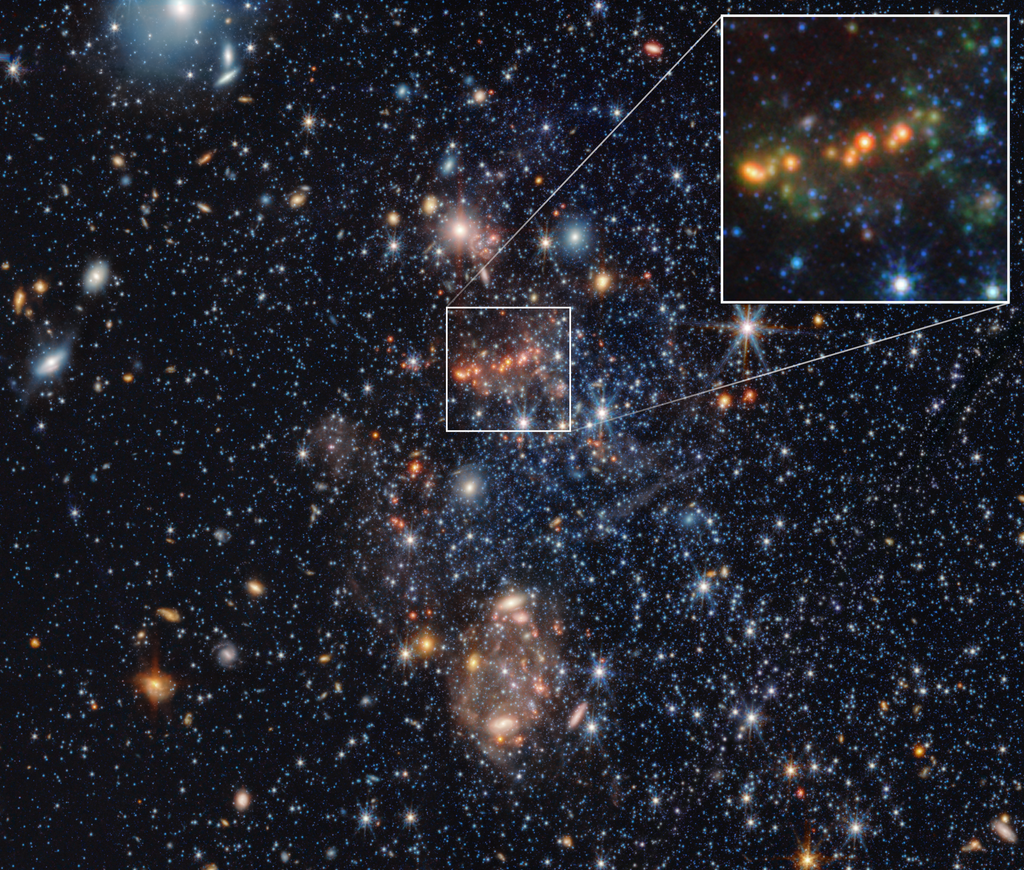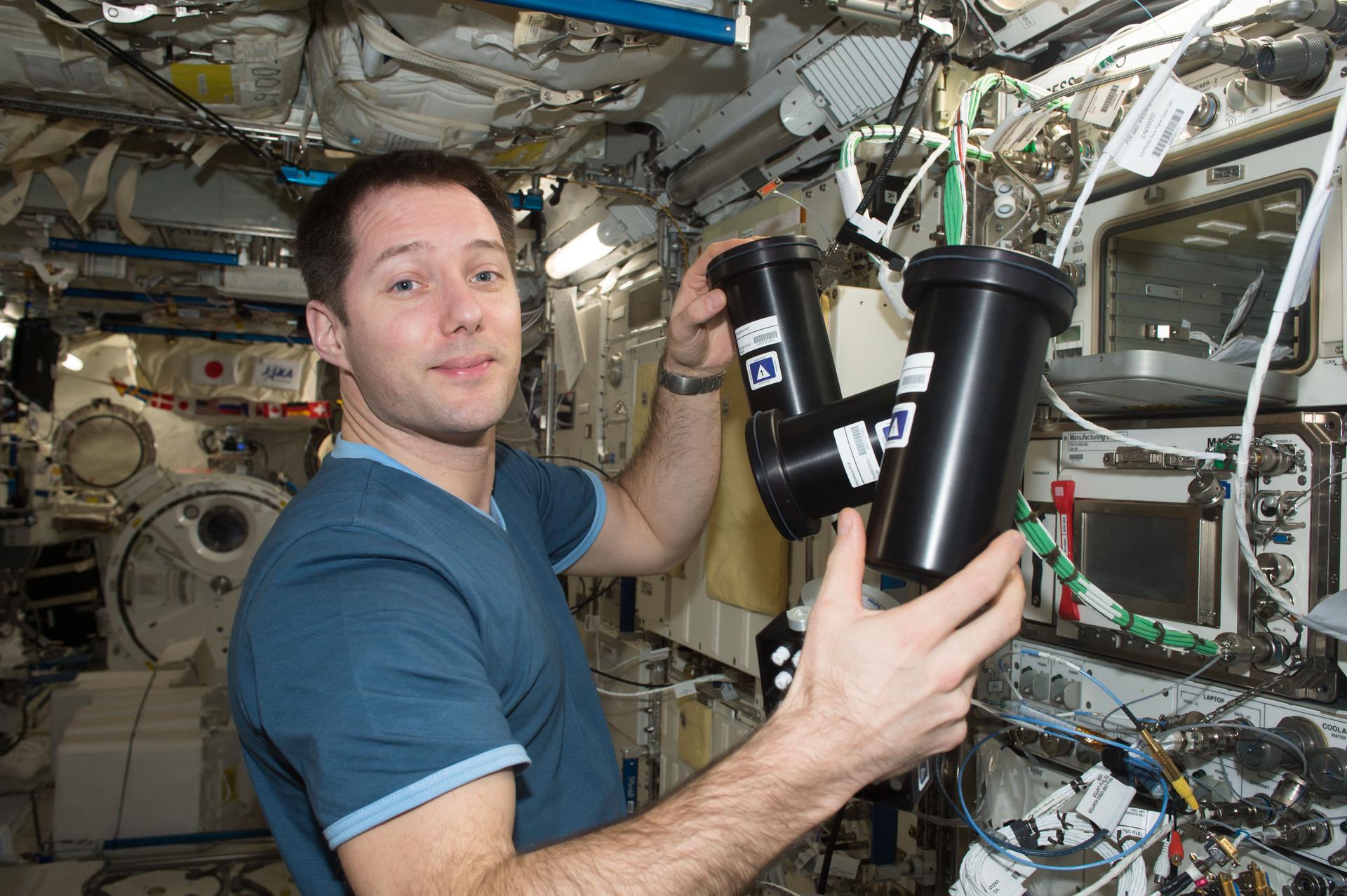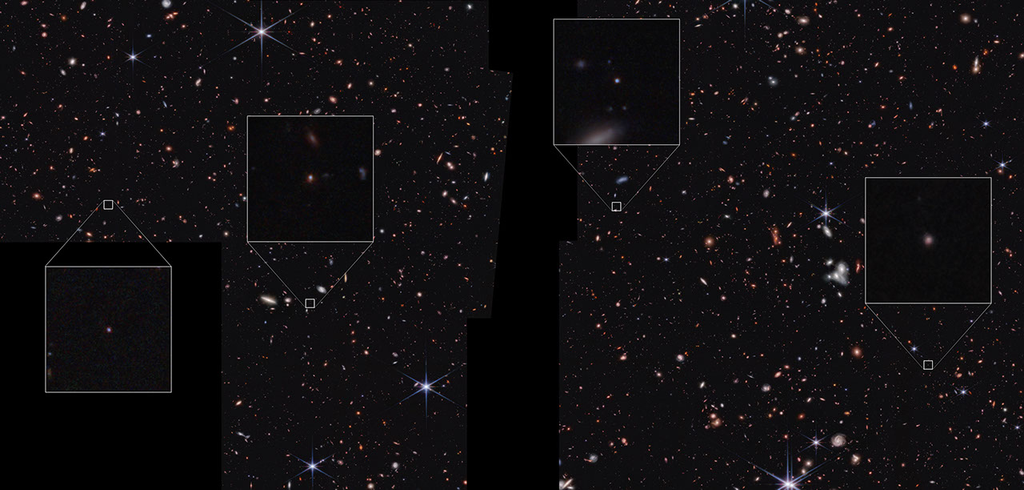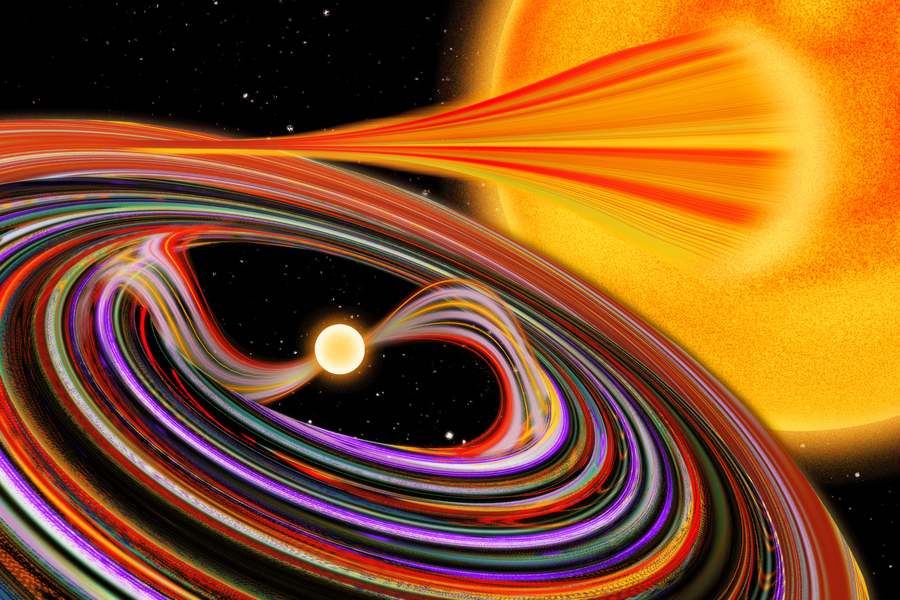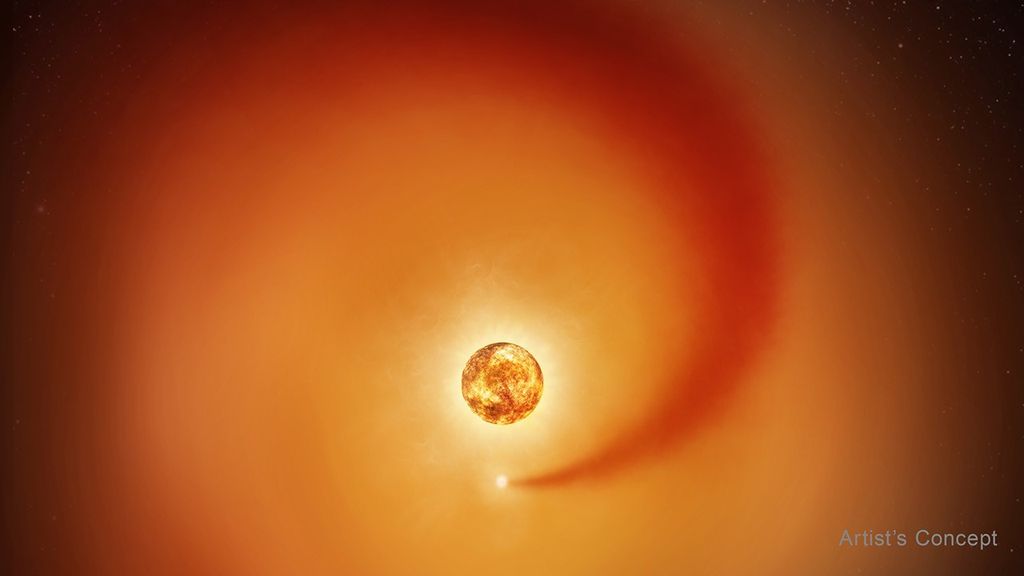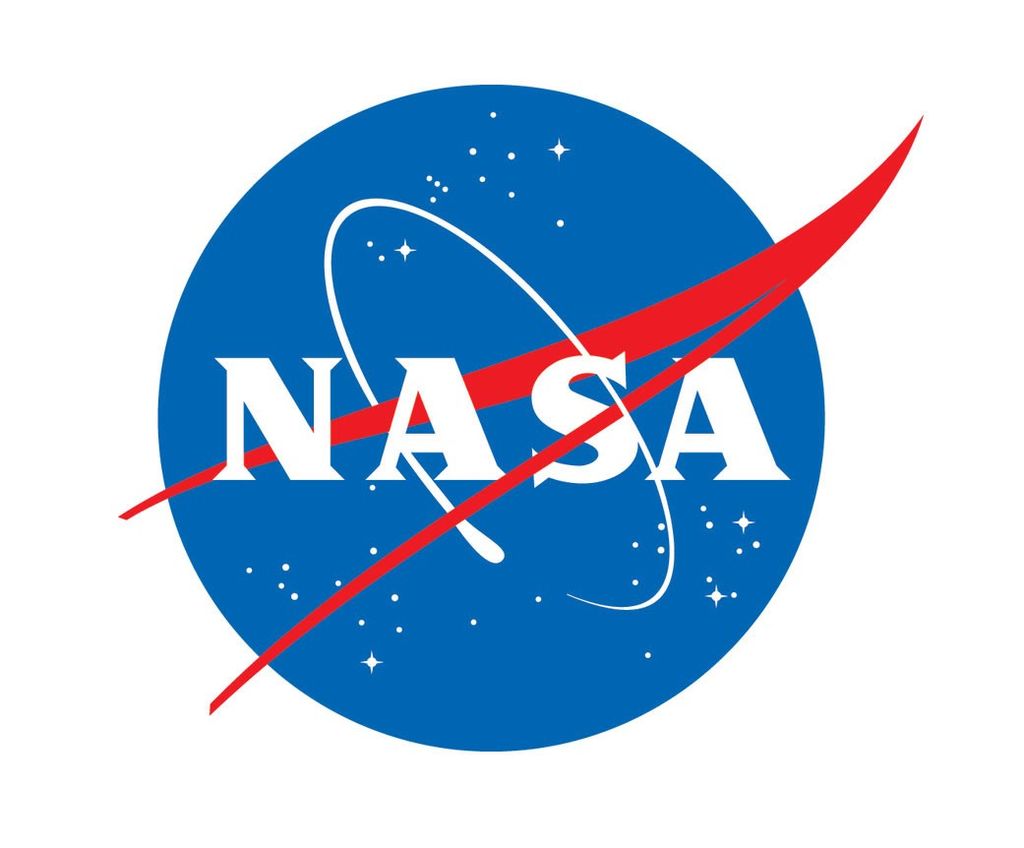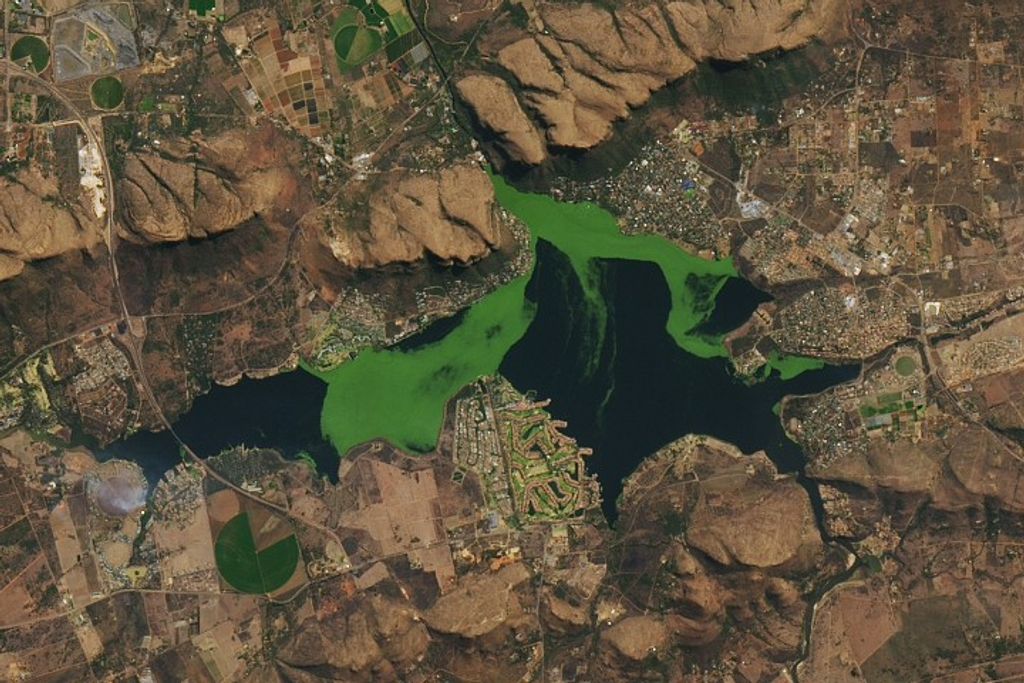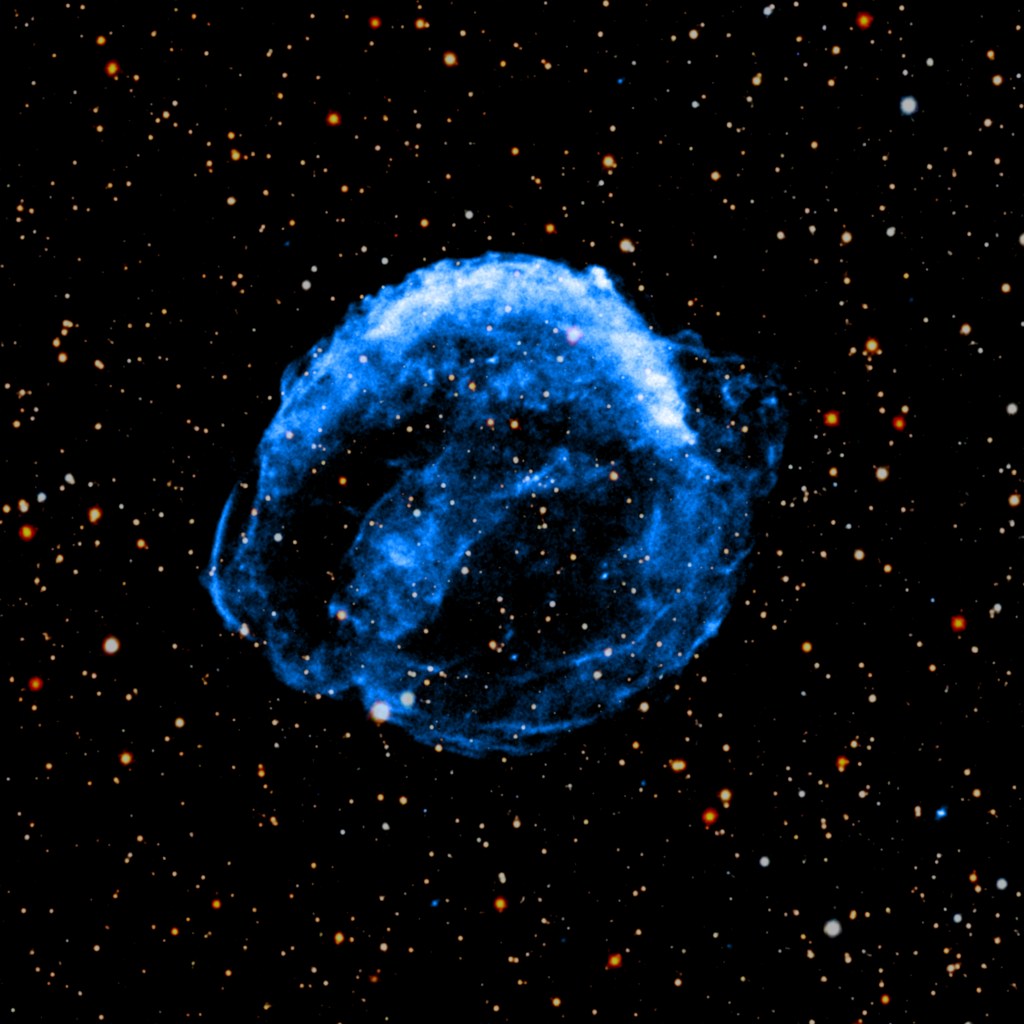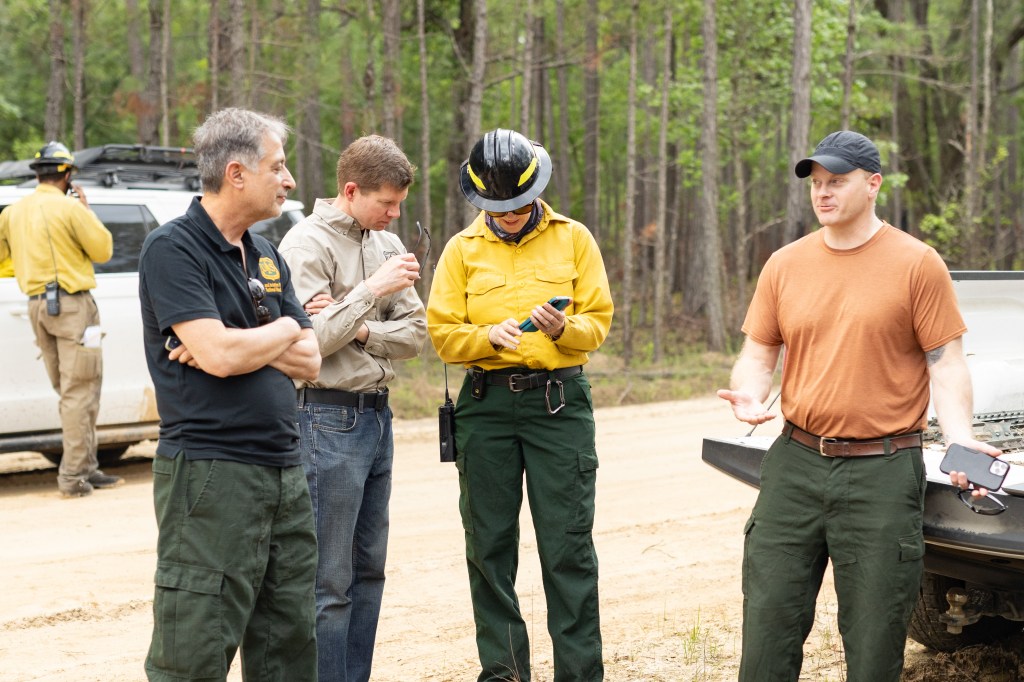1 min read
The Pillars of Creation: A 3D Multiwavelength Exploration
This scientific visualization explores the iconic Pillars of Creation in the Eagle Nebula (Messier 16 or M16) using data from NASA's Hubble and Webb space telescopes.
Based on scientific results, astronomers and artists modeled this striking formation in three dimensions and created a movie that allows viewers to fly past and among the pillars. What can appear to be three pillars in a two-dimensional image separates into four dust clouds with ionized gas streaming away from each in the three-dimensional model.
As the virtual camera flies through the model, the view shifts between the visible-light and infrared-light perspectives. Viewers explore the contrasts between Hubble's and Webb's observations, which demonstrate how the telescopes complement each other by probing different scientific aspects of the clouds.
The Pillars of Creation get their nickname from the fact that stars are forming within these dust clouds. The visual tour highlights various stages of star formation, including an embedded protostar at the top of the central pillar, bipolar jets from a hidden star in the process of forming in the upper part of the left pillar, and a newborn star in the middle of the left pillar.
This visualization is a product of the AstroViz Project of NASA's Universe of Learning. A longer visualization, The Pillars of Creation and the Interplay of Stars and Dust, includes narration detailing the structures and the science behind them.
For additional learning resources, including videos, sonifications, interactives, and 3D printable models, visit the Pillars of Creation Resources page at NASA's Universe of Learning.
- Release DateJune 26, 2024
- Science ReleasePillars of Creation Star in New Visualization from NASA’s Hubble and Webb Telescopes
- CreditGregory Bacon (STScI), Ralf Crawford (STScI), Joseph DePasquale (STScI), Leah Hustak (STScI), Danielle Kirshenblat (STScI), Christian Nieves (STScI), Joseph Olmsted (STScI), Alyssa Pagan (STScI), Frank Summers (STScI), Robert Hurt (Caltech, Caltech/IPAC); Science Advisor: Anna McLeod (Durham University); Music: Joseph DePasquale (STScI)
Downloads
Related Images & Videos
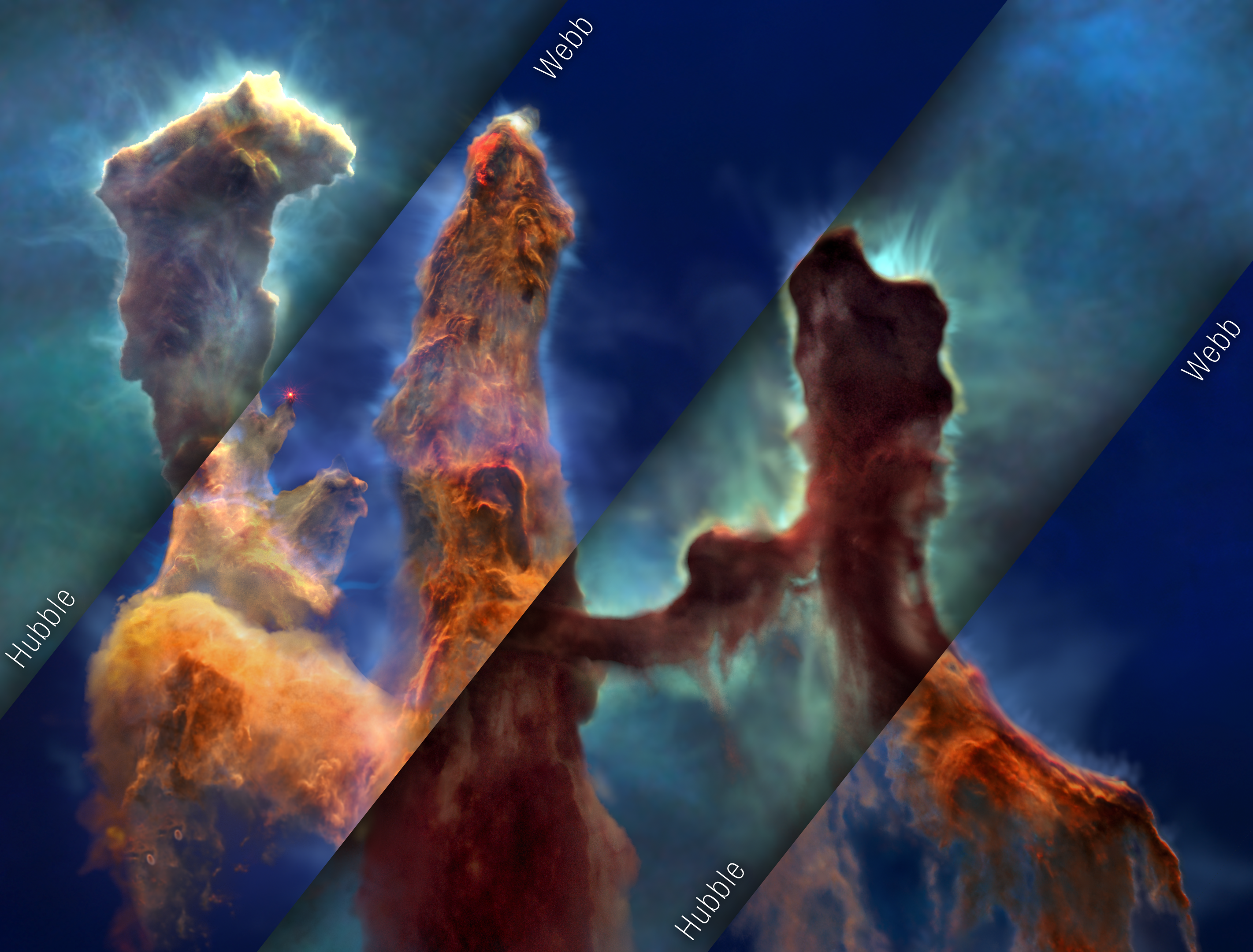
Pillars of Creation (Visualization Mosaic)
This image is a mosaic of visible-light and infrared-light views of the same frame from the Pillars of Creation visualization . The three-dimensional model of the pillars created for the visualization sequence is alternately shown in the Hubble Space Telescope version (visible...

Pillars of Creation 3D Model
This photograph shows a 3D printed model of the famous Pillars of Creation in the Eagle Nebula. The 3D sculpted computer model used in the Pillars of Creation visualization was converted to the STL file format and set atop a round base for use with 3D printers. Find the full...
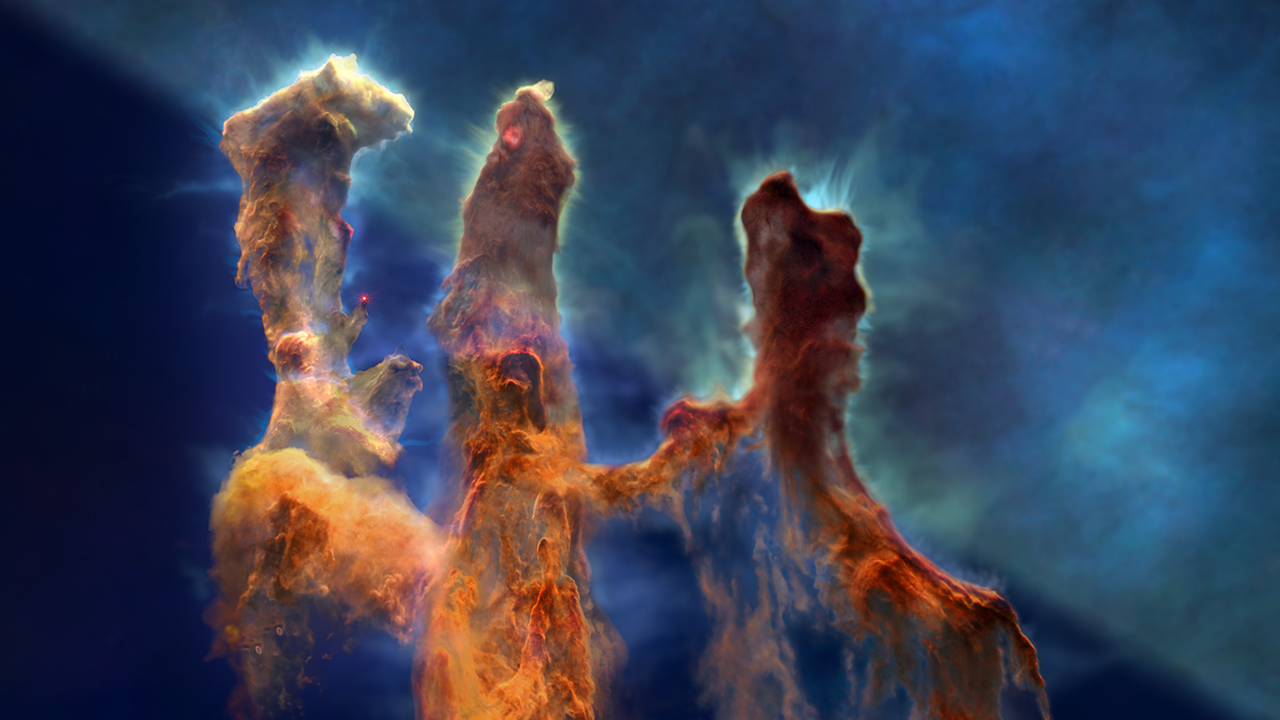
The Pillars of Creation and the Interplay of Stars and Dust
This scientific visualization explores the iconic Pillars of Creation in the Eagle Nebula (Messier 16 or M16) and the various ways that stars and dust are intertwined in the process of star formation. In developing the contextual story and the three-dimensional model, the video...
Share
Details
Claire Andreoli
NASA’s Goddard Space Flight Center
Greenbelt, Maryland
claire.andreoli@nasa.gov
NASA’s Universe of Learning, Gregory Bacon (STScI), Frank Summers (STScI)
Gregory Bacon (STScI), Ralf Crawford (STScI), Joseph DePasquale (STScI), Leah Hustak (STScI), Danielle Kirshenblat (STScI), Christian Nieves (STScI), Joseph Olmsted (STScI), Alyssa Pagan (STScI), Frank Summers (STScI), Robert Hurt (Caltech, Caltech/IPAC)
Anna McLeod (Durham University)
Joseph DePasquale (STScI)

